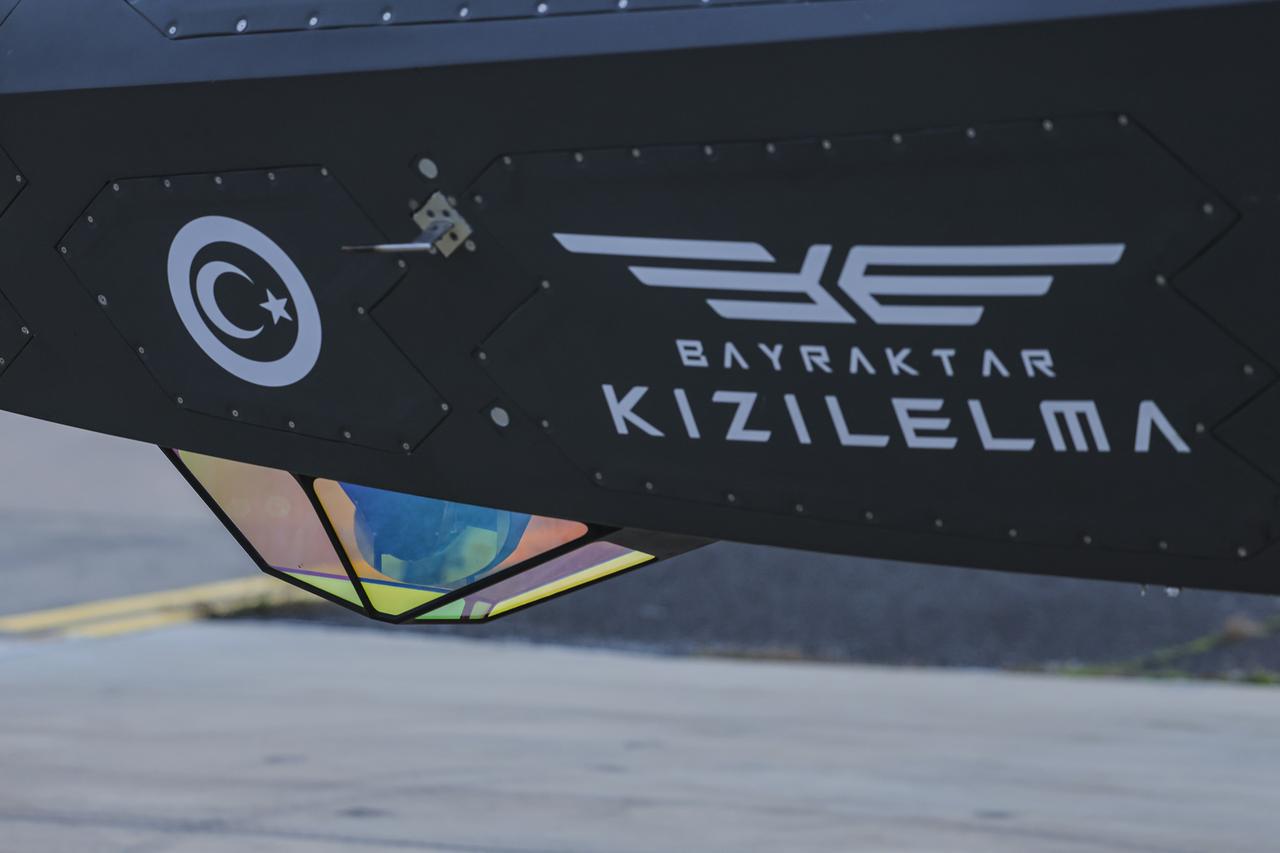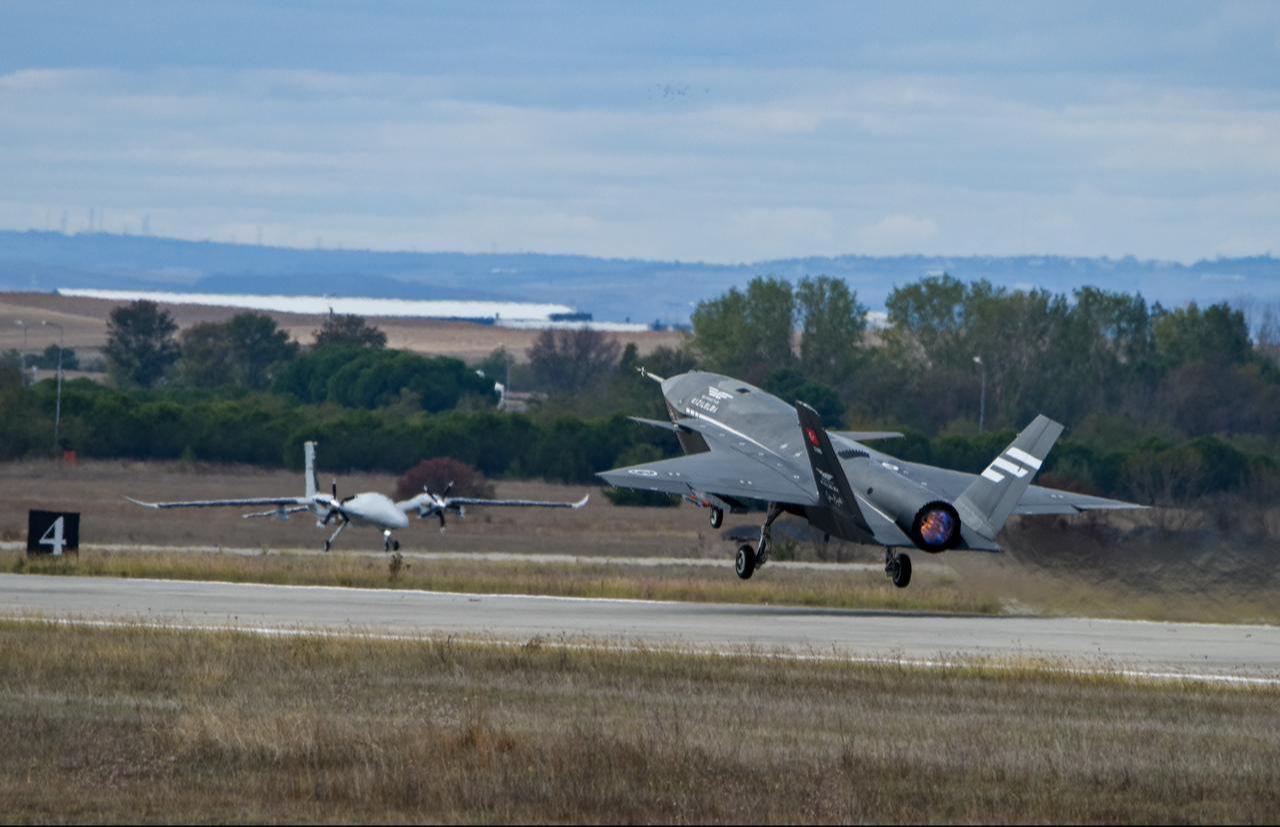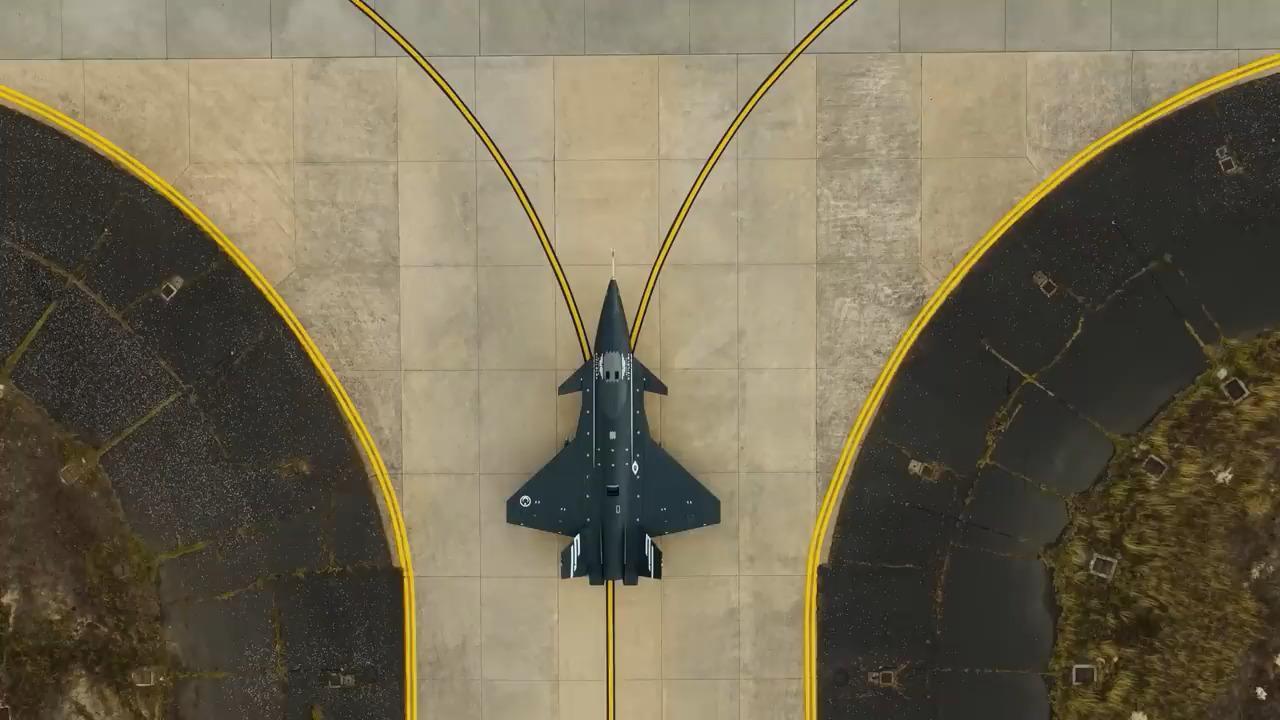
Türkiye’s drone giant Baykar, manufacturer of the famed TB2, TB3, and Akinci drones, recently crossed new thresholds with Kizilelma, its single jet engine unmanned combat aerial vehicle (UCAV).
Since last week, the fifth prototype of Kizilelma has flown several sorties to test the Toygun electro-optical targeting system (EOTS) and the MURAD 100-A active electronically scanned array radar, both under development with Türkiye’s military-electronics giant, ASELSAN, while carrying the Gokdogan medium-range air-to-air missile, developed by TUBITAK SAGE.
In Turkic mythology and history, “Kizilelma” (Red/Crimson Apple) has represented the highest ideals and goals that successive rulers and states have aspired to. Expansive in definition—from establishing justice and order to expanding domains to liberating the oppressed—“red apples” often took their bold heroes on new adventures.
In that regard, “Kizilelma” is a fitting name for one of Baykar’s most ambitious projects. Not only will the UCAV, often billed as the “world’s first unmanned fighter jet,” become a handsome addition to the Turkish Air Force, but with some luck and smart moves by Ankara and allied capitals, it could take both Baykar and Türkiye to new heights in geopolitical influence and global defense markets.

Kizilelma is likely to follow a similar script as Baykar’s propeller-powered TB2, TB3, and Akinci.
Bayraktar TB2s became world famous for the critical role they played in defending Ukraine during the opening rounds of Russia’s second invasion in 2022. Together with Turkish Aerospace Industries’ (TAI) Anka class of unmanned aerial vehicles (UAVs), TB2s served as force multipliers for Turkish and allied forces in such hotspots as Iraq, Karabakh, Libya, and Syria.
TB3 made history last year when it became the first UAV to land and take off from a short-runway carrier, while Akinci is best known for locating the crash site of Iranian President Ebrahim Raisi’s helicopter in April 2024.
Like its older siblings, Kizilelma will start off as an intelligence, surveillance, and reconnaissance asset when it joins the Turkish Air Force (TuAF), but then take on enemy targets. That is why it is undergoing tests with the MURAD radar, the Toygun EOTS, and the Gokdogan missile, which is considered a domestic alternative to Western-made air-to-air missiles, especially the AMRAAMs, used on TuAF fighters.
Last month, Kizilelma began its first live-fire tests with Turkish-made air-to-ground munitions ROKETSAN Teber and ASELSAN Tolun, according to the defense news website SavunmaSanayiST.
The UCAV will also experience some mission overlap with older Baykar platforms. Several years ago, Baykar Chairman and Chief Technology Officer Selcuk Bayraktar had stated that TB2 could be fitted with ROKETSAN Sungur short-range air-to-air missiles to engage other drones and even helicopters.
ROKETSAN CEO Murat Ikinci confirmed in January 2024 that TB3, TB2’s heavier and carrier-capable iteration, will be integrated with the Sungur, according to the website Defence Turk. TB3 will form the air wing of the Turkish Navy’s flagship, the amphibious assault ship TCG Anadolu.
With a takeoff weight of 8.5 tons and a payload of 1.5 tons, Kizilelma will have an operational ceiling of 25,000 feet (7.6 kilometers or 4.7 miles), according to Baykar’s website. Aside from the six stations under its wings, “Red Apple” comes with two internal weapons bays that will considerably lower its radar visibility.
How much will the Kizilelma cost? At present, “flyaway” price tags vary wildly, ranging from $3 million to as much as €30 million ($34.5 million). In December, British economist Timothy Ash wondered why Türkiye would buy F-16 Block 70s at $100 million to $200 million from the United States when it could obtain 15 Kizilelmas for that price.

Kizilelma is already solving several problems for the Turkish Armed Forces. By testing payloads and munitions, it is making sure that future platforms, especially the national combat aircraft, MMU Kaan, which will also feature the Toygun EOTS and MURAD radars, will come with tried and proven components.
Meanwhile, large numbers of Kizilelmas are likely to enter the Turkish arsenal quickly. According to Baykar CEO Haluk Bayraktar, the company intends to produce as many as 48 Kizilelmas in 2026.
With approximately 240 F-16s of various ages and blocks in TuAF, the need to retire the venerable F-4E Phantoms, and the incoming Eurofighter Typhoons, several dozen Kizilelmas—perhaps as many as 100—could become a powerful presence until a critical mass of MMU Kaans joins the force in the 2030s.
That would also enable TAI to refurbish Turkish-owned F-16s under the “Ozgur” project without worrying about the force’s combat readiness.
From a broader operational viewpoint, Kizilelma will lessen the weight on manned combat aircraft. In contested airspace, Türkiye could keep manned platforms at a distance to protect personnel and deploy Kizilelma to wreak all sorts of havoc on the opposing side.
Kizilelma is also going to become a “dynamic duo” with another low-observable/stealth Turkish UCAV, TAI’s Anka-3, which looks like a smaller version of the Northrop Grumman B-2 Spirit.
With Kizilelma optimized for air missions and Anka-3 for ground attack, besides solo missions, both will likely serve as “loyal wingmen” with other Turkish and allied manned aircraft.

Another innovation that could be integrated into the Kizilelma is resisting electronic jamming. As the war in Ukraine stretched beyond the “three days” that Moscow had anticipated in 2022, Russia improved its electronic warfare (EW) efforts, forcing the TB2s, which had helped to pummel invading Russian forces in the initial phase of the invasion, to be repurposed as ISR assets and “spotters” for Ukrainian artillery. It might be a good idea to fit the more expensive Kizilelma with electronic counter-countermeasures and its own EW capabilities.
Of course, as with all engineering marvels, Kizilelma is not perfect and comes with tradeoffs. While the aircraft’s canard delta design features foreplanes near the nose cone (like the Eurofighter Typhoon, Dassault Rafale, and Saab JAS 39 Gripen) that give it excellent control and maneuverability—major advantages in a dogfight—it also increases the UCAV’s radar signature.
To mitigate that risk, Kizilelma will come with a radar-absorbent coating, while the Toygun EOTS, embedded into the airframe, will search, track, acquire, and fire upon enemy elements without having to turn on its radar, thus lowering the probability of detection by the opposition.
Much of Kizilelma’s flight and data processing will be controlled using artificial intelligence, giving it the ability to operate autonomously.
Perhaps the toughest problem for Kizilelma will be the one that many other Turkish defense projects face: Engines. At present, the UCAV is fitted with a Ukrainian-made Ivchenko-Progress/Motor Sich AI-25 turbofan engine, with plans to integrate the AI-322F engine that comes with an afterburner.
While Baykar executives have stated their intention to develop engines for their platforms in-house, TEI, the engine subsidiary of TAI, is working on the TF-10000 turbofan engine, which has a thrust comparable to the Ukrainian systems mentioned above. (TF-10000s are the final step before TEI starts testing the TF-35000 engines for the MMU Kaan in 2026.)
TB2, TB3, and Akinci took Baykar from a little-known company to the world’s biggest UAV vendor. In 2024, Baykar earned 90% of its revenues from exports in 2024 and selling goods and services worth $1.8 billion to 35 countries.
Kizilelma is likely to add a few hundred million dollars (if not billions) to those figures, but could it do more for Türkiye’s geopolitical clout?
As the Kizilelma joins TuAF and logs hours, its “concept of operations” will mature and expand, giving Türkiye’s military and defense industries new ideas on how to design and implement future manned and unmanned solutions.
That, in turn, will have positive international ramifications—in a sense, that is already happening. Earlier this year, Baykar acquired Italy’s venerable aviation firm Piaggio Aerospace and formed the joint venture firm LBA Systems with Italian defense giant Leonardo. The Italian connection will give Baykar access to Leonardo technologies and European markets while opening doors for future projects.
As discussed in the Financial Times, one avenue of cooperation is the 6th-generation fighter aircraft project, the Global Combat Air Program (GCAP, informally known as “Tempest”), in which Leonardo is a member along with Japan Aircraft Industrial Enhancement Company (JAIEC) and the UK’s BAE Systems.
The capabilities of sixth-generation fighters and what distinguishes them from “fifth-gens” are yet unclear; GCAP aims for directed-energy weapons, enhanced manned-unmanned cooperation, and loyal wingmen.
So far, only China has begun testing two aircraft dubbed “sixth-gen”—Chengdu J-36 and Shenyang J-50 (J-XDS). Meanwhile, the United States announced the F-47 under its Next Generation Air Dominance program.
Like the US and Chinese programs (and the Turkish MMU Kaan), GCAP has an ambitious timeline: Demonstrator flight in 2027 and initial service entry by 2035.
But at a time when advanced systems become more challenging to develop and implement from an engineering and financial standpoint, having partners such as Türkiye’s Baykar (and TAI, of course) could improve the British-Italian-Japanese program’s chance for timely success.
Seeking global parity with the Americans and Chinese would be an amazing “red apple” for Türkiye and its future partners.